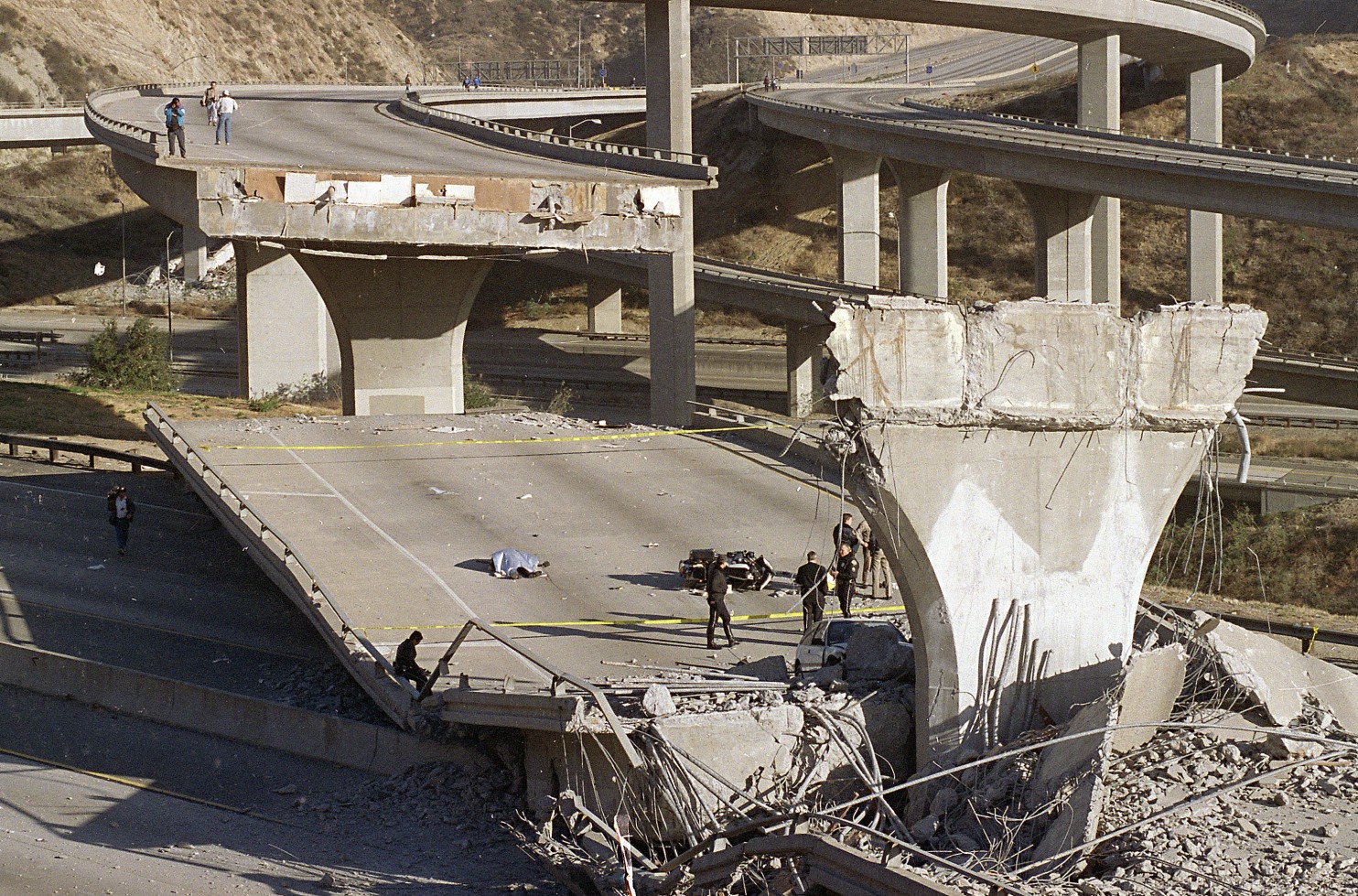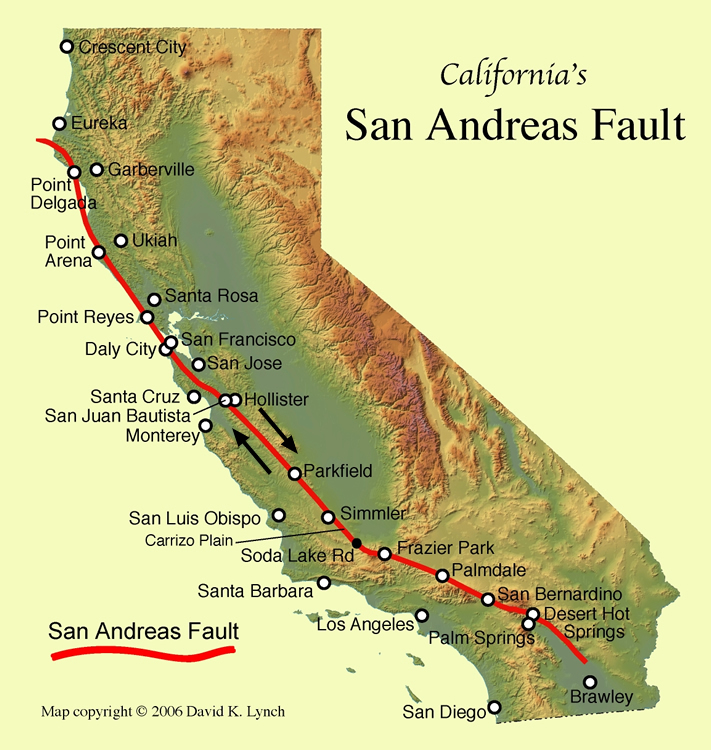If you ask anyone in SoCal, they will tell you that we are long overdue for the “Big One” – earthquake, that is. There’s not a month that goes by where news outlets aren’t reporting something about it, all of which are very informative and helpful to read:
- LA Times: San Andreas fault ‘locked, loaded and ready to roll’ with big earthquake, expert says
- OC Register: What are the chances of a major earthquake in Southern California?
- FOX News: Earthquakes: Reckoning with ‘The Big One’ in California-and it just got bigger
In summary, according to the FOX News report, researchers say a statewide quake above 8.0 would likely hit the Golden State once at least every 2,500 years.
Every state has a natural disaster: Florida is known for hurricanes, Minnesota for snow, Washington state for rain. California has earthquakes and they happen. Every. Single. Day. As residents, this is our reality.
I found these great charts from Michigan Technological University that discuss the earthquake magnitude scale and earthquake magnitude classes:
Earthquake Magnitude Scale
| Magnitude | Earthquake Effects | Estimated Number Each Year |
| 2.5 or less | Usually not felt, but can be recorded by seismograph. | 900,000 |
| 2.5 to 5.4 | Often felt, but only causes minor damage. | 30,000 |
| 5.5 to 6.0 | Slight damage to buildings and other structures. | 500 |
| 6.1 to 6.9 | May cause a lot of damage in very populated areas. | 100 |
| 7.0 to 7.9 | Major earthquake. Serious damage. | 20 |
| 8.0 or greater | Great earthquake. Can totally destroy communities near the epicenter. | One every 5 to 10 years |
Earthquake Magnitude Classes
Earthquakes are also classified in categories ranging from minor to great, depending on their magnitude.
| Class | Magnitude |
| Great | 8 or more |
| Major | 7 – 7.9 |
| Strong | 6 – 6.9 |
| Moderate | 5 – 5.9 |
| Light | 4 – 4.9 |
| Minor | 3 – 3.9 |
The United States Geological Survey (USGS) has also said that California has a 46% chance of a 7.5 or larger quake in the next 30 years and that the quake would probably hit SoCal. The Northridge quake, which killed 72 people and caused $25 billion in damage in 1994, was much smaller at a magnitude of 6.7.

The State of California Conservation Department’s chart below shows the biggest earthquakes that have struck California since 1800, ranked by magnitude:
A Sampling of California’s Largest Earthquakes
(Since 1800, ranked by magnitude)
| Magnitude | Date | Location | Comments |
| 7.9 | Jan. 9, 1857 | Fort Tejon | 2 killed, 220-mile surface scar |
| 7.9 | April 18, 1906 | San Francisco | 3,000 killed, $524 million in property damage, including fire damage |
| 7.8 | March 26, 1872 | Owens Valley | 27 killed, 3 aftershocks of 6.25+ |
| 7.5 | July 21, 1952 | Kern County | 12 killed, 3 aftershocks of 6+ |
| 7.3 | Jan. 31, 1922 | West of Eureka* | 37 miles offshore |
| 7.3 | Nov. 4, 1927 | SW of Lompoc* | No major injuries, slight damage |
| 7.3 | June 28, 1992 | Landers | 1 killed, 400 injured, 6.5 aftershock |
| 7.2 | Jan. 22, 1923 | Mendocino | Damaged homes in several towns |
| 7.2 | Nov. 8, 1980 | West of Eureka* | Injured 6, $1.75 million in damage |
| 7.2 | April 25, 1992 | Cape Mendocino* | 6.5 and 6.6 aftershocks |
| 7.1 | Oct. 16, 1999 | Ludlow (Hector Mine Quake) | Remote, so minimal damage |
| 7.1 | May 18, 1940 | El Centro | 9 killed, $6 million in damage |
| 6.9 | Oct. 17, 1989 | Loma Prieta | 63 killed |
| 6.7 | Jan. 17, 1994 | Northridge | 61 killed, $15 billion in damage |
| 6.6 | Feb. 9, 1971 | San Fernando | 65 killed, $50 million in damage |
| 6.4 | March 10, 1933 | SE of Long Beach* | 115 killed, prompted to Field Act to protect schools |
* Offshore quake
The biggest quake I have ever felt wasn’t while living in SoCal, but when I was on vacation in LA in March 2010. It was 4 a.m. and I was in my hotel room in Koreatown when I felt my bed rocking back and forth violently. It lasted maybe 30 seconds and I was wide awake after that! The magnitude was a 4.4 and luckily, no damage or injuries were reported. You can learn all about the latest quakes by following the USGS map here.
Usually if I feel a very minor quake it is when I am laying in bed at night. I can feel slight tremors every now and then, but that is about it. When I lived in OC in Anaheim, I lived right off the 5 Freeway where the San Andreas Fault Line runs and I would feel the tremors constantly.

I’ve had a few friends tell me they would never move to California for fear of earthquakes. The way I look at it is, you can’t live your life in fear and you have to keep moving forward with your dreams. Is it possible the Big One could happen? Absolutely! It could happen even as I’m typing this blog post.
Even with the USGS Earthquake Warning System, there still really isn’t enough time to suddenly be prepared, which is why the Federal Emergency Management Agency (FEMA) stresses to be prepared now: secure objects that could be a safety hazard, hold family drills to learn where to drop, cover and hold on, have an emergency kit with First Aid essentials, duffel bags, non-perishable food, water and even learn how to help your community by going to a disaster aid relief organization such as the American Red Cross They also have an awesome before, during and after checklist here. Another checklist is from FEMA, which you can find here.

My parents are also prepared: I half-jokingly say to them that if the Big One hit and the state had to be evacuated, I would go stay with them in Florida. They have my room assembled and ready. 🙂
The best advice is to not overthink or stress about it, stay safe and have a plan!

Photo credit: David K. Lynch, MultiVu, Washington Post, LA Times
